For thousands of years, humans have turned to nature’s pharmacy in search of healing, comfort, and vitality. Medicinal leaves, in particular, stand out as humble yet powerful remedies for varieties of ailments. Across continents and cultures, people have plucked leaves from their gardens, forests, and fields. They have brewed them into teas, crushed them into poultices, or simply chewed them for their renowned health benefits. These green wonders are packed full of nutrients, antioxidants, and bioactive compounds that modern science continues to explore and validate.
From soothing digestive issues to calming inflamed skin, medicinal leaves have played a pivotal role in traditional medicine systems. Ayurveda, Traditional Chinese Medicine, and indigenous healing practices have purported the health benefits of medicinal leaves for centuries. Many of these medicinal leaf remedies have now found their way into modern households, with research confirming their antibacterial, anti-inflammatory, and immune-boosting properties.
Whether you’re seeking relief from a stubborn cold, looking to lower stress, or hoping to support your body’s natural detoxification processes, you’ll find effective solutions in nature. Some of the most powerful remedies are growing right outside your window. These medicinal leaves not only offer gentle, accessible alternatives to conventional medicine but also offer relief and symptomatic aid to conventional treatments.
As we rediscover the value of ancient remedies, we open ourselves to a more holistic approach to health, harnessing the complex relationship of tradition and science. Join us as we explore 10 extraordinary leaves, each celebrated for its unique healing properties and time-honored uses.
1. Dandelion Leaves (Taraxacum officinale)
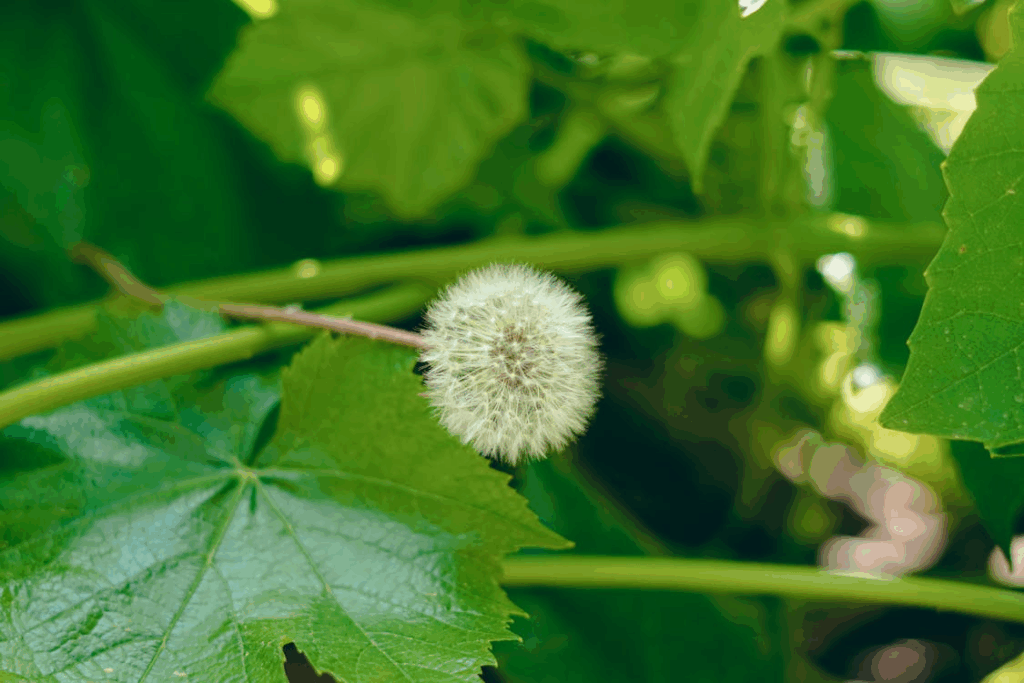
Dandelion (Taraxacum officinale) is a resilient, perennial herb native to Eurasia but now widespread across North America and many other parts of the world. Recognizable by its bright yellow flowers and deeply toothed leaves, dandelions grow in diverse environments from gardens to meadows. The leaves are long, jagged, and rich in nutrients. Historically, dandelion has been used in Asia, Europe, and North America for its medicinal properties as a natural detoxifier and liver tonic.
Chemical Properties and Active Compounds

Dandelion leaves contain a complex mix of bioactive compounds, including phenolic acids (like chicoric acid) and flavonoids (such as luteolin and luteolin-7-glucoside). The medicinal leaves also contain vitamins (A, C, and several B vitamins) and minerals (potassium, calcium, magnesium).
Dandelion leaves also contain sesquiterpene lactones responsible for its characteristic bitter taste. These compounds offer very potent antioxidant, anti-inflammatory, and diuretic effects. Notably, chicoric acid and luteolin contribute to preventing blood clots, while polyphenols in the leaves help reduce stress on the body.
Medicinal Uses and Other Applications
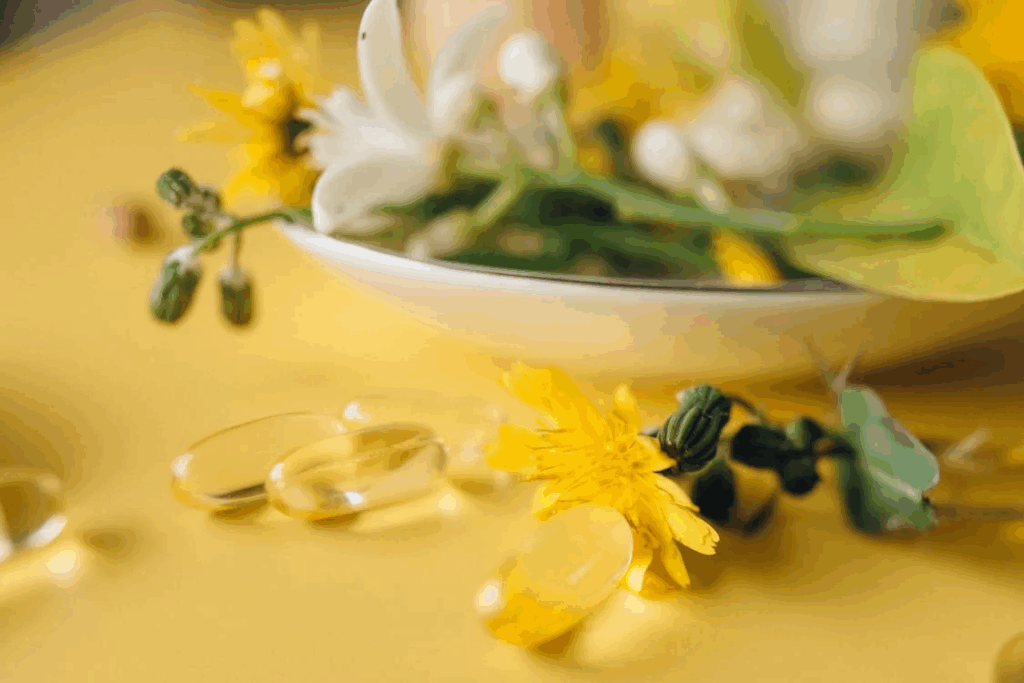
The medicinal leaves of dandelion have long been sought after for their diuretic and detoxifying properties. They help the kidneys process liquid, supporting better function. They improve liver health by stimulating bile production and help with digestion. These leaves also help your stomach, reduce swelling, and may help control blood sugar and maintain heart health by stopping blood clots.
Additionally, dandelion leaves possess antimicrobial and antiviral properties, enhancing the body’s natural defenses against sickness. Beyond medicine, dandelion leaves are also consumed as nutritious greens in salads or cooked dishes, valued for their rich vitamin and mineral content.
Preparation and Administration
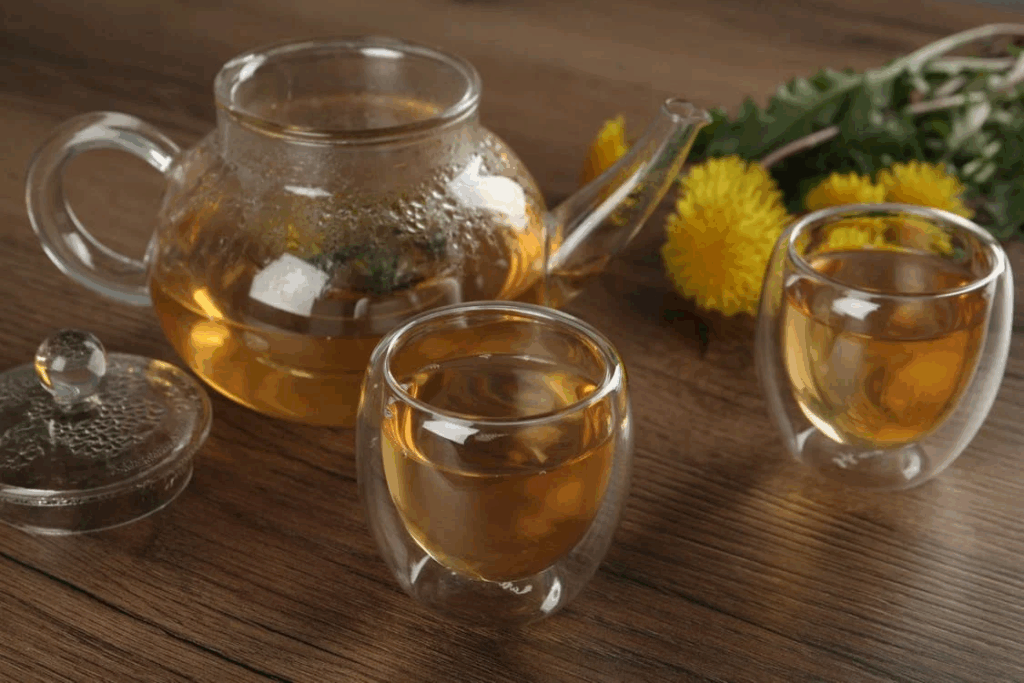
People use dandelion leaves both orally and topically, with oral use being more common. For medicinal purposes, they often brew the leaves into teas or tinctures to harness their diuretic and digestive benefits. They eat fresh leaves raw in salads or steam them as a vegetable to gain nutrients and mild detoxification support. Topical applications, such as poultices made from crushed leaves, may help soothe minor skin irritations and inflammation, though this is less common than oral use. When using medicinal leaves, it is advisable to start with small amounts to monitor tolerance.
2. Neem (Azadirachta indica)

Neem (Azadirachta indica) is a fast-growing evergreen tree native to the Indian subcontinent and widely found in tropical and subtropical regions around the world. It belongs to the Meliaceae family and is extensively used in traditional medicine systems like Ayurveda, Unani, and Chinese medicine. Neem leaves are dark green, pinnate, and have a characteristic bitter taste. For centuries, these medicinal leaves have been valued for their healing properties and are used to treat a wide range of health conditions.
Chemical Properties and Active Compounds
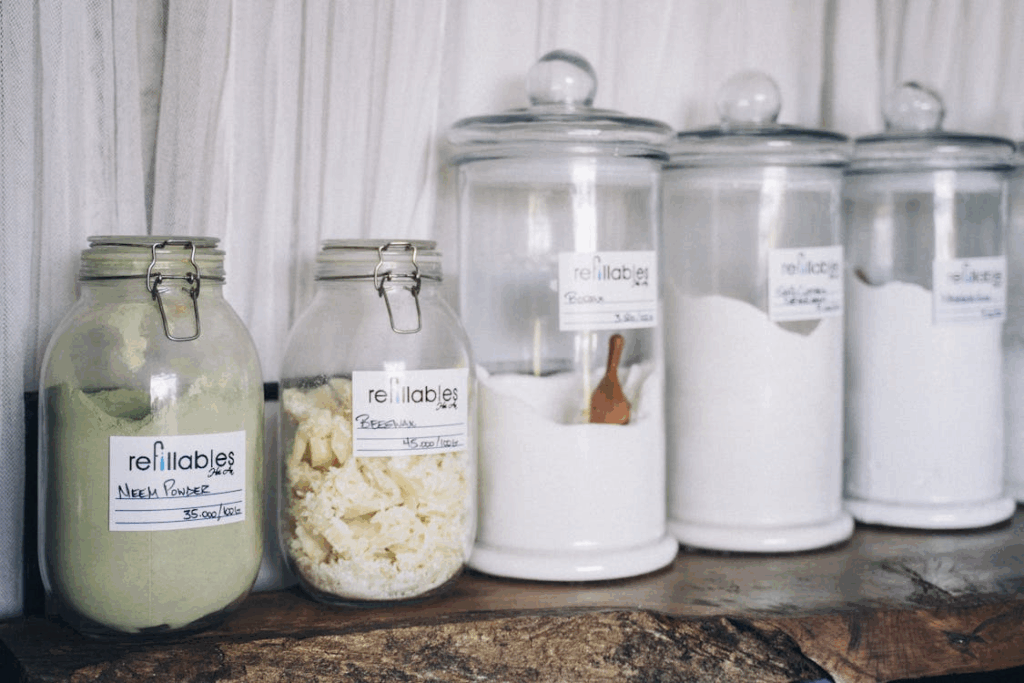
Neem leaves contain a rich array of bioactive compounds responsible for their medicinal effects. The most important compounds include azadirachtin, nimbolinin, nimbin, nimbidin, nimbolide, and quercetin. These compounds exhibit strong antibacterial, antifungal, anti-inflammatory, and antioxidant properties. Neem leaves also contain vitamins such as vitamin C, carotenoids, and minerals like calcium and phosphorus. The presence of polyphenolic flavonoids like quercetin contributes to neem’s ability to fight infections and reduce inflammation effectively.
Medicinal Uses and Other Applications
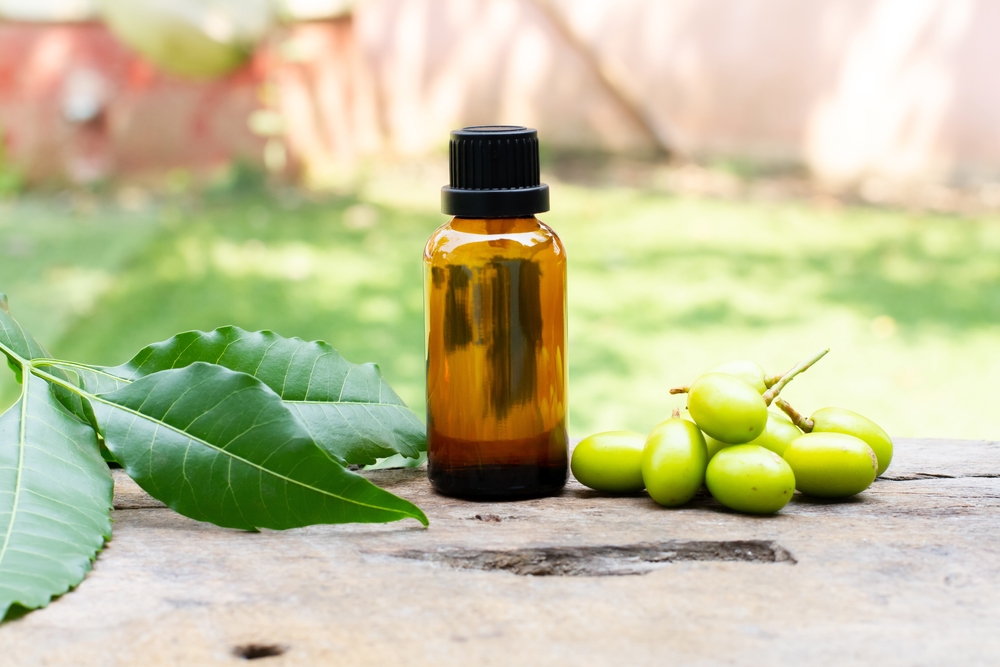
Medicinal leaves of neem are widely used for their antibacterial, antifungal, and anti-inflammatory benefits. They help treat skin conditions such as acne, eczema, and psoriasis by reducing inflammation and fighting harmful microbes. Neem supports oral hygiene by preventing gum disease and cavities, often used in natural toothpaste and mouthwashes.
Additionally, neem boosts immunity by scavenging free radicals and modulating immune responses. Neem leaves are also used in agriculture as a natural pesticide due to their insect-repellent properties.
Preparation and Administration
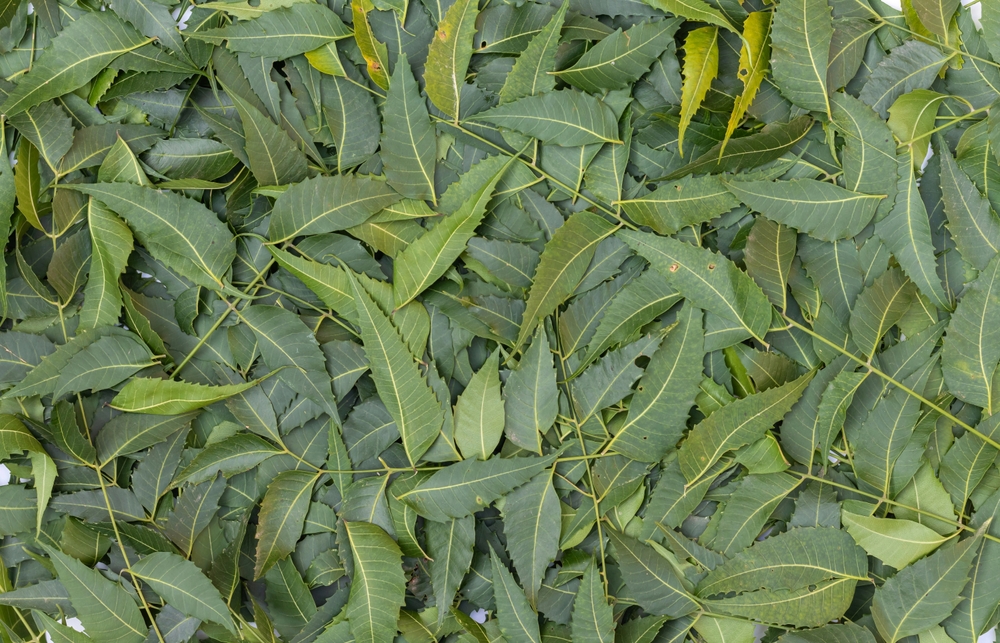
Neem leaves can be used both orally and topically. For oral use, neem leaf powder or extracts are commonly brewed into teas or taken as capsules to support immune health and detoxification. Topically, neem leaf paste or oil is applied to the skin to treat infections and inflammation.
Neem-based mouthwashes help maintain oral hygiene. It is important to use neem products as directed, since the bitter compounds can be potent. Both fresh and dried leaves retain medicinal properties, with drying helping to preserve antioxidant activity.
Read More: 8 Useful Herbs for Memory and Brain Health
3. Aloe Vera Leaves
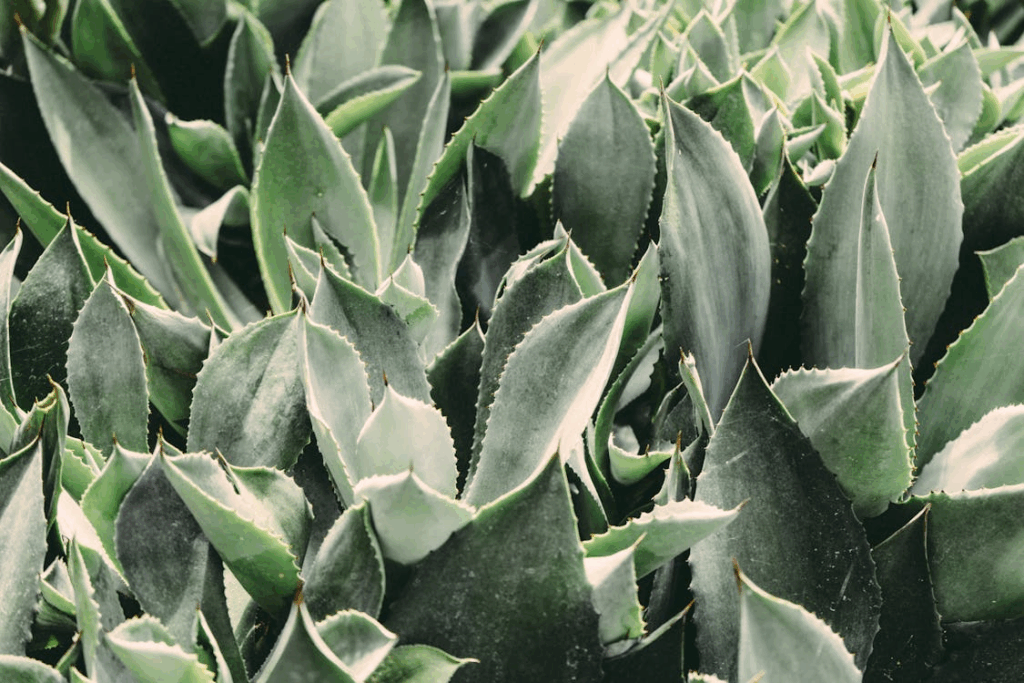
Aloe vera (Aloe barbadensis) is a succulent plant native to the Arabian Peninsula but now cultivated worldwide in tropical and subtropical regions. It features thick, fleshy, pointed green leaves that store water in gel-like fleshy tissue inside. People have used these medicinal leaves for thousands of years in traditional medicine to heal and soothe. Aloe vera widely earns praise for its antibacterial and antioxidant properties and for treating skin injuries.
Chemical Properties and Active Compounds
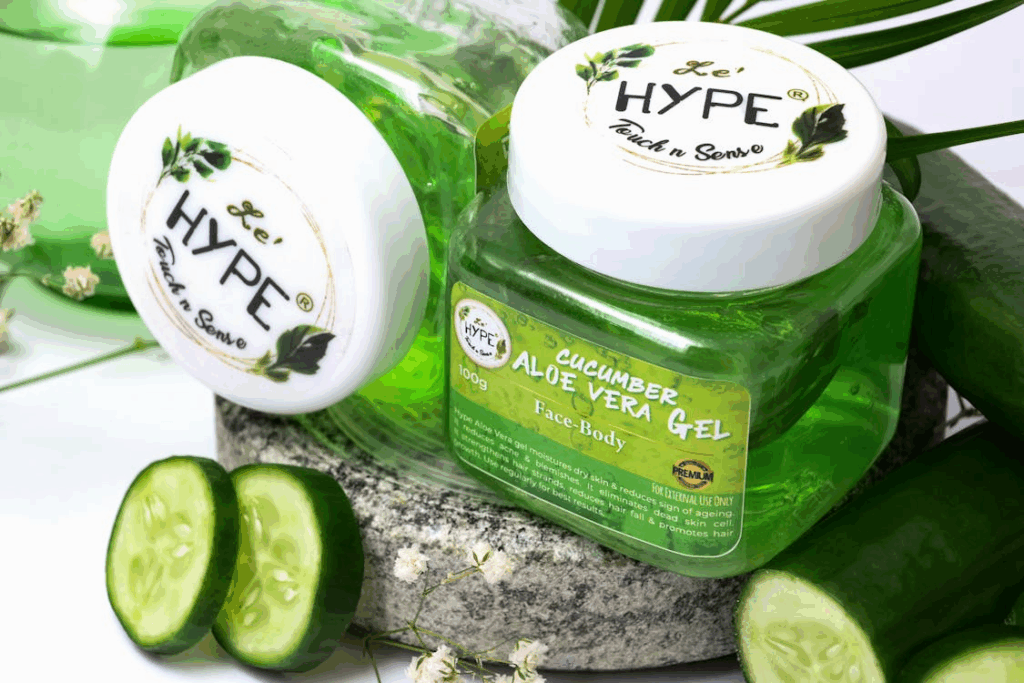
The medicinal leaves of aloe vera contain a rich mix of bioactive compounds, including vitamins (A, C, E, and B-complex), minerals, enzymes, polysaccharides (notably acemannan), amino acids, and antioxidants. These compounds give aloe vera its anti-inflammatory, antibacterial, and antioxidant effects. The gel inside the leaves inhibits bacteria like Staphylococcus aureus and Pseudomonas aeruginosa, which can cause infections. Additionally, aloe contains compounds that may help regulate blood sugar and support immune function.
Read More: 8 Benefits of Aloe Vera Everyone Needs to Know
Medicinal Uses and Other Applications
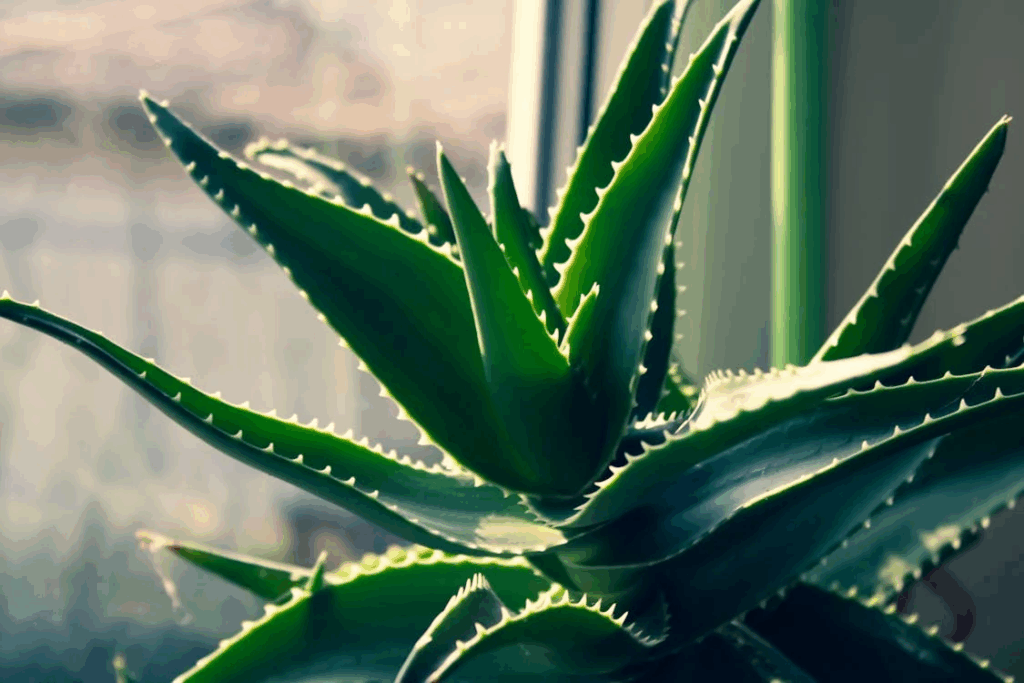
Aloe vera leaves are best known for treating burns, wounds, and skin conditions by reducing inflammation and speeding healing. Topical application of aloe gel has been shown to relieve burn pain and promote skin repair. Medicinal leaves of aloe vera also support skin hydration and barrier function, making them popular in cosmetics and skincare.
When taken internally in small amounts, aloe vera can aid digestion and may help lower blood sugar and cholesterol levels. This could offer potential benefits for people with diabetes and heart conditions. Aloe’s antibacterial properties can also help reduce dental plaque and gum disease.
Preparation and Administration

People use aloe vera medicinal leaves both topically and orally. For skin healing, they slice open the leaf to extract fresh aloe gel and apply the clear gel directly to burns, wounds, or irritated skin. For internal use, they consume aloe juice or gel in controlled, small doses to support digestion and metabolic health. They use aloe latex, a yellow sap from the leaf, as a laxative but apply it cautiously due to potential side effects. Commercial aloe products often standardize the gel for safe and effective use.
4. Eucalyptus Leaves (Eucalyptus globulus)
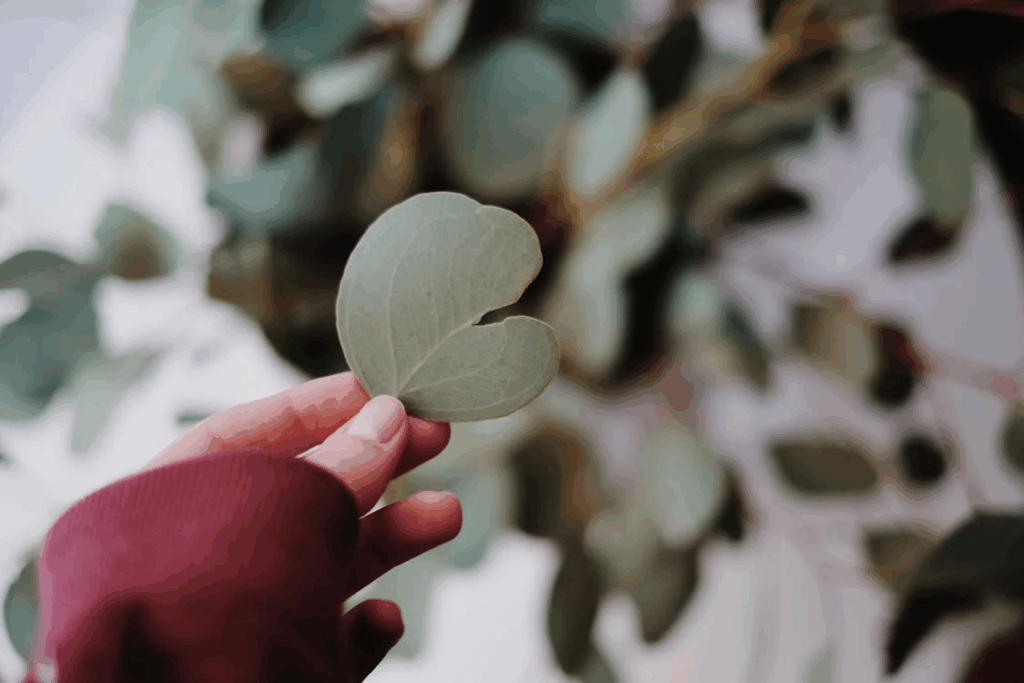
Eucalyptus is a tall, fast-growing evergreen tree native to southeastern Australia. It has long, narrow, oval-shaped leaves that are rich in essential oils. Indigenous Australians have used these medicinal leaves for centuries because of their healing properties. Today, people cultivate eucalyptus trees globally, especially in tropical and subtropical regions, and value them for their therapeutic benefits and aromatic qualities.
Chemical Properties and Active Compounds
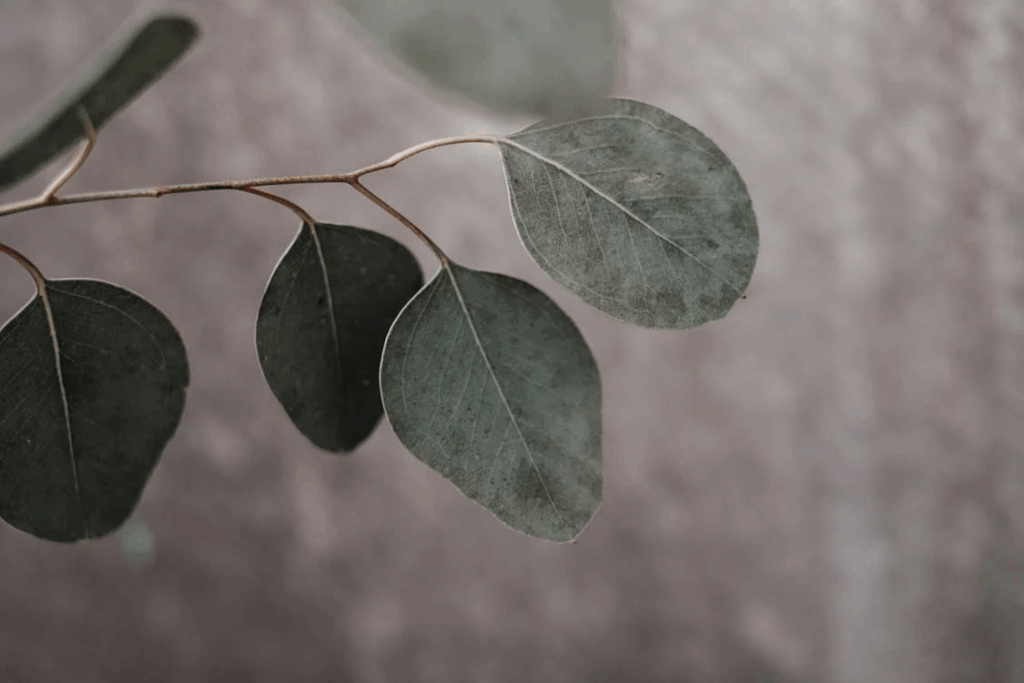
The medicinal leaves of eucalyptus contain a high concentration of essential oils, primarily eucalyptol (also called cineole), which makes up 60-90% of the oil. Eucalyptol is responsible for most of eucalyptus’s medicinal effects, including its antiseptic, anti-inflammatory, and decongestant properties. The leaves also contain flavonoids, tannins, and other compounds that contribute to antioxidant and antimicrobial activities. These bioactive compounds work together to fight infections, reduce inflammation and symptoms of coughs, colds and congestion.
Medicinal leaves of eucalyptus are widely used to treat respiratory conditions such bronchitis, sinusitis, and asthma. Eucalyptus oil helps clear nasal congestion and soothes irritated airways, making it a common ingredient in steam inhalations and topical rubs like Vicks VapoRub. Its antiseptic properties also make it effective for disinfecting wounds and preventing infections.
Eucalyptus oil is also used in oral care products to combat bacteria that cause bad breath, cavities, and gum disease. Going beyond just its medicinal uses, eucalyptus oil serves as an effective natural insect repellent. Eucalyptus oil is also hailed for its aromatic properties, reducing stress and anxiety.
Preparation and Administration
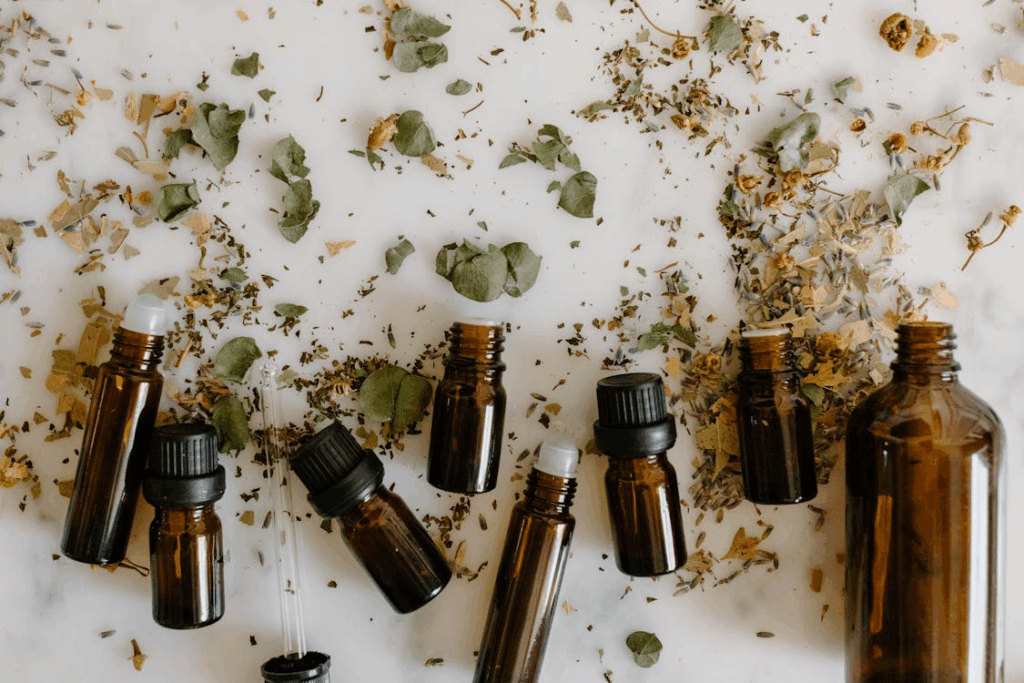
People typically dry eucalyptus medicinal leaves and steam-distill them to extract the essential oil. They then dilute this oil with carrier oils for safe topical application or use it in steam inhalations to relieve respiratory symptoms. People can also brew the leaves into teas, although this practice is less common.
Topical use includes applying diluted eucalyptus oil to the chest or throat to ease congestion or to wounds to prevent infection. Inhalation of eucalyptus vapors is the most common way of relieving congestion. It is important to avoid ingesting undiluted eucalyptus oil due to potential toxicity.
5. Bay Leaves (Laurus nobilis)
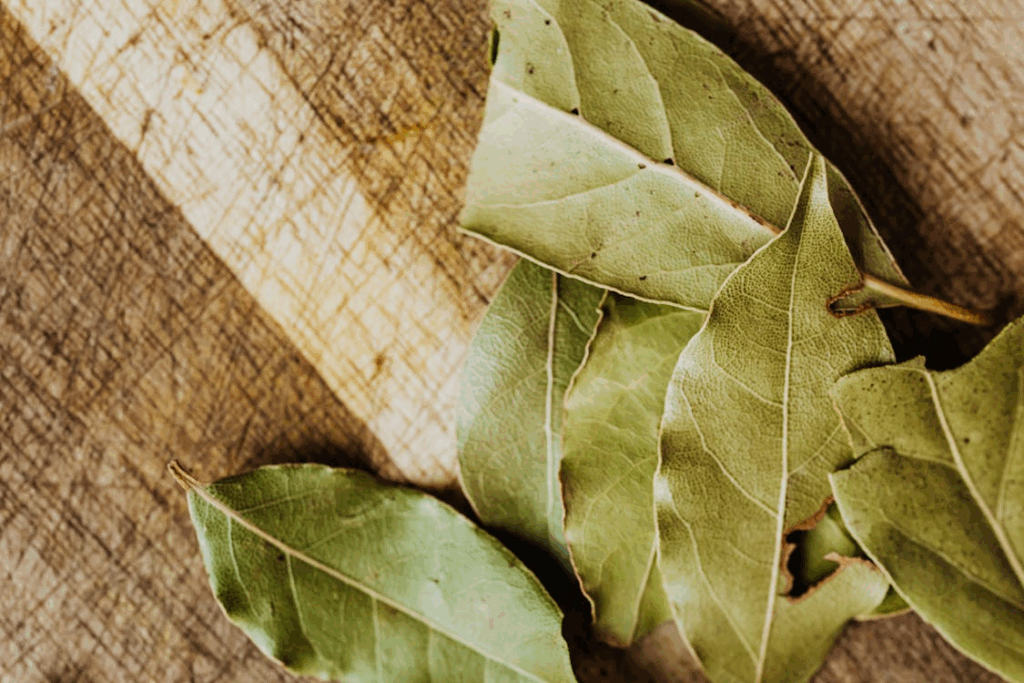
Bay leaves come from the evergreen bay laurel tree native to the Mediterranean region. The tree produces aromatic, dark green leaves that people have used for centuries both as a culinary spice and for their medicinal properties. People in Mediterranean countries like Turkey, Italy, and Greece have long valued these medicinal leaves for their healing and digestive benefits.
Chemical Properties and Active Compounds
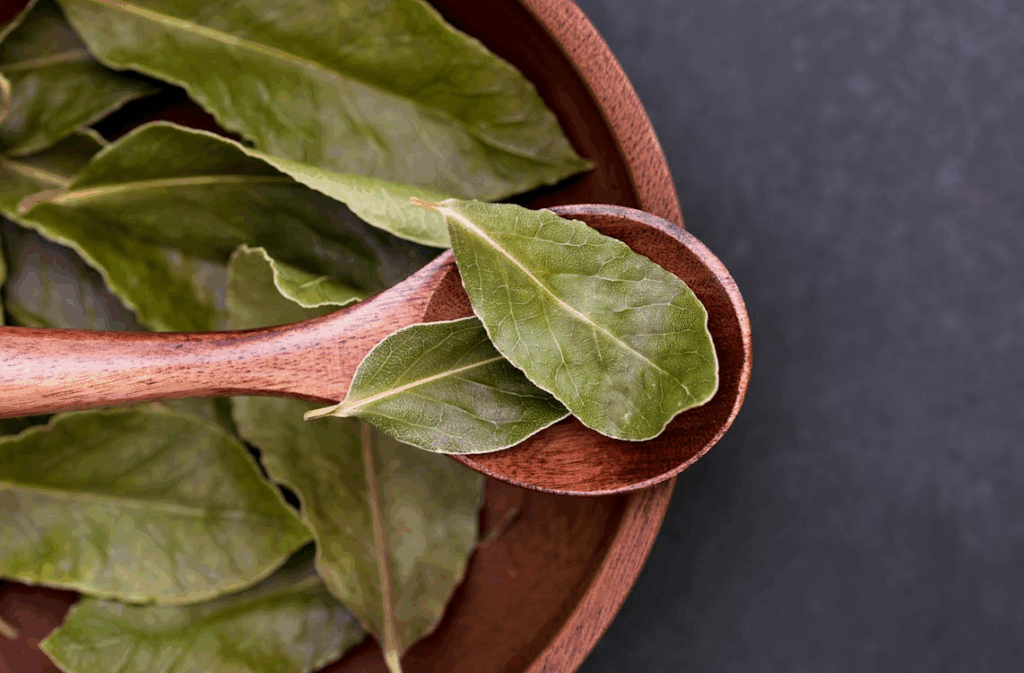
Bay leaves contain a rich combination of bioactive compounds which give the leaves potent anti-inflammatory, antimicrobial and antioxidant properties. These compounds include phenolic acids, flavonoids, tannins, coumarins, and essential oils such as eucalyptol and linalool. The leaves also provide important nutrients like vitamins A, C, B6, magnesium, calcium, and iron, which support overall health and immune function.
Medicinal Uses and Other Applications
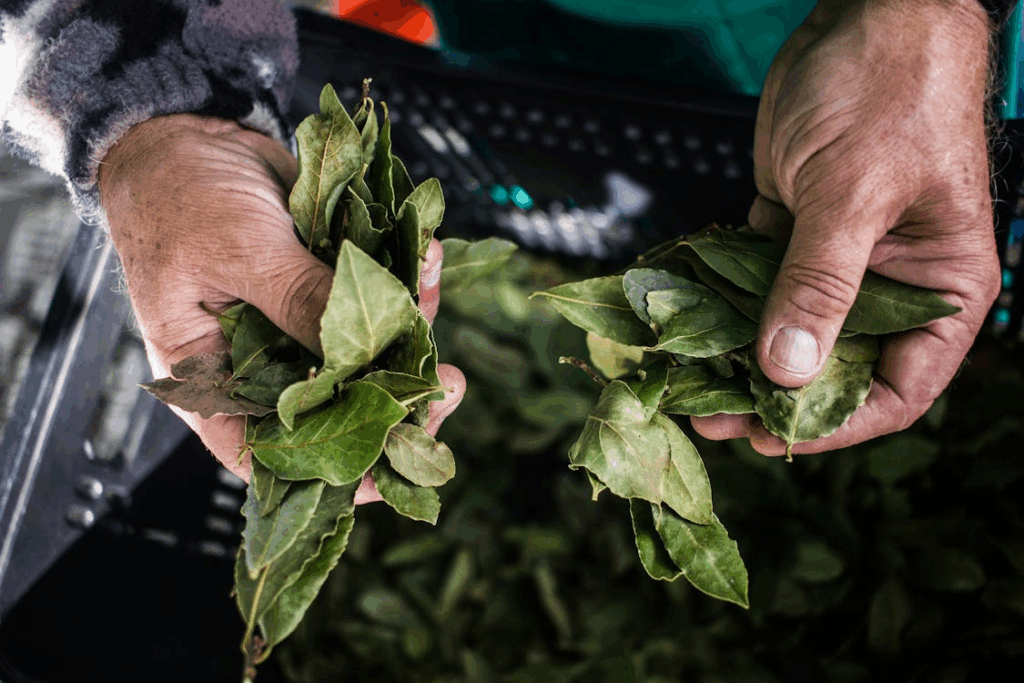
Bay leaves help in digestion by reducing gas, bloating, and indigestion. They relieve respiratory issues, helping clear mucus and ease breathing during colds and bronchitis. Bay leaves reduce inflammation and pain, making them useful for arthritis and rheumatic conditions. They also show antimicrobial effects against bacteria and fungi, aiding in infection control.
Bay leaves may help regulate blood sugar and cholesterol levels, supporting heart health and diabetes management. Traditional uses include treating skin conditions, promoting wound healing, and improving cognitive function by reducing stresses on the body.
Read More: Ten Science-Backed Herbs and Supplements to Help Lower Your Blood Sugar Naturally
Preparation and Administration
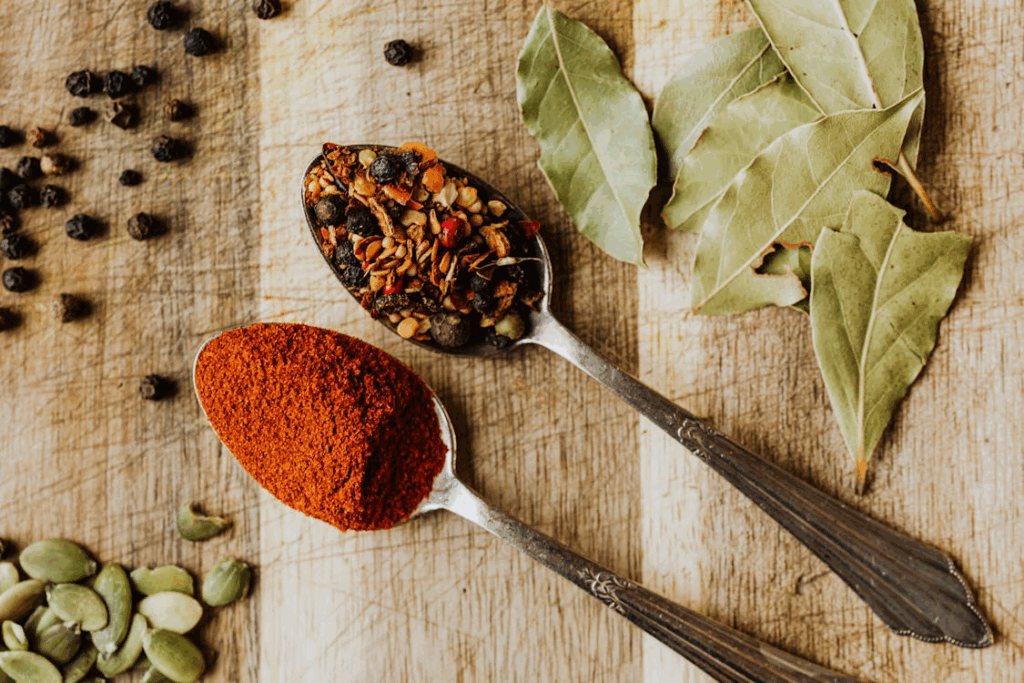
Bay leaves are commonly used as dried leaves brewed into teas or used in culinary dishes. Drinking bay leaf tea can aid digestion, relieve respiratory symptoms, and support blood sugar control. The leaves can also be used in steam inhalations to clear nasal passages. Topical applications involve using bay leaf-infused oils or poultices to reduce inflammation and treat skin issues.
6. Tulsi / Holy Basil (Ocimum sanctum)
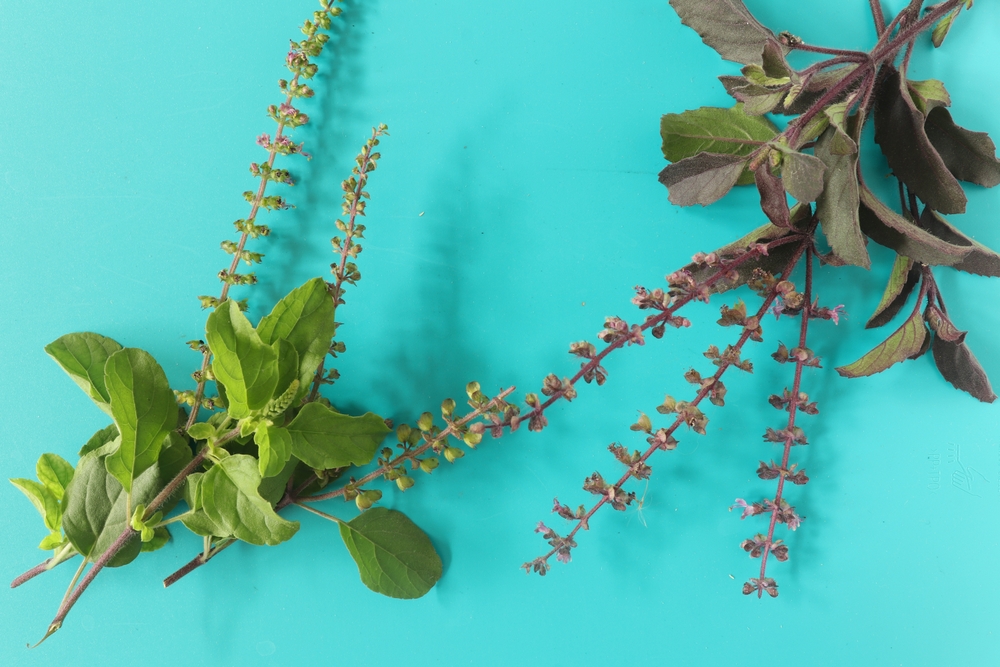
Tulsi, also known as Holy Basil (Ocimum sanctum or Ocimum tenuiflorum), is a herb native to the Indian subcontinent and widely cultivated in Southeast Asia. This aromatic plant features green to purple serrated leaves and holds a prestigious and sacred position in Ayurvedic and traditional medicine. Known as the “elixir of life”, tulsi’s medicinal leaves have been used to promote physical, mental, and spiritual well-being across India.
Chemical Properties and Active Compounds
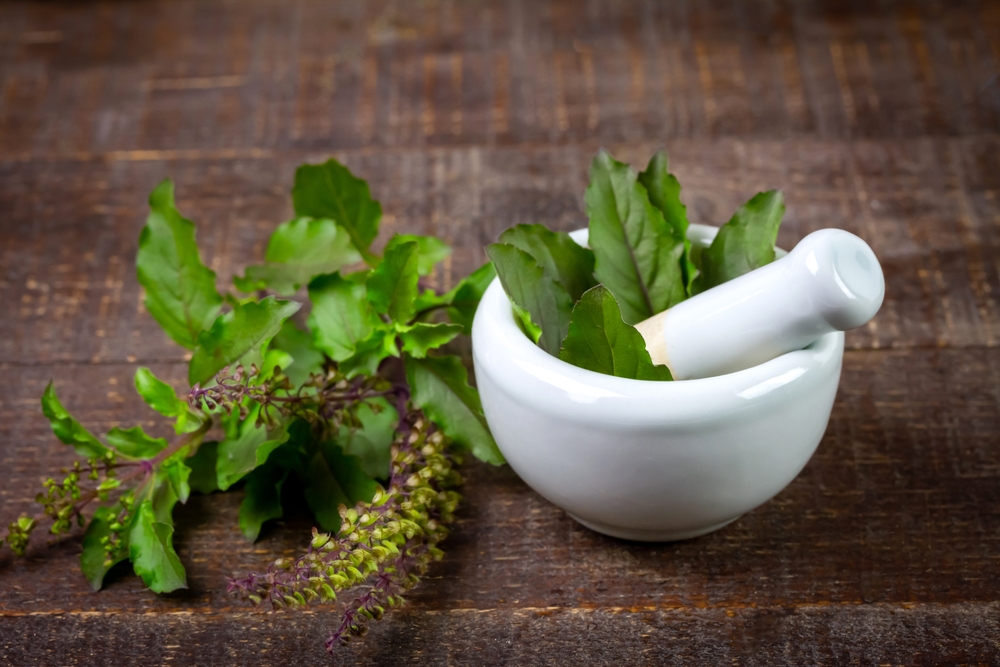
The medicinal leaves of tulsi contain a rich blend of bioactive compounds. Eugenol, the primary active compound, provides strong antimicrobial, anti-inflammatory, and antioxidant effects. Tulsi leaves also contain vitamins (A, C), minerals (zinc, calcium), and essential oils that contribute to its immune-boosting properties. These compounds work together to reduce oxidative stress, fight infections, and balance the body’s immune response.
Medicinal Uses and Other Applications
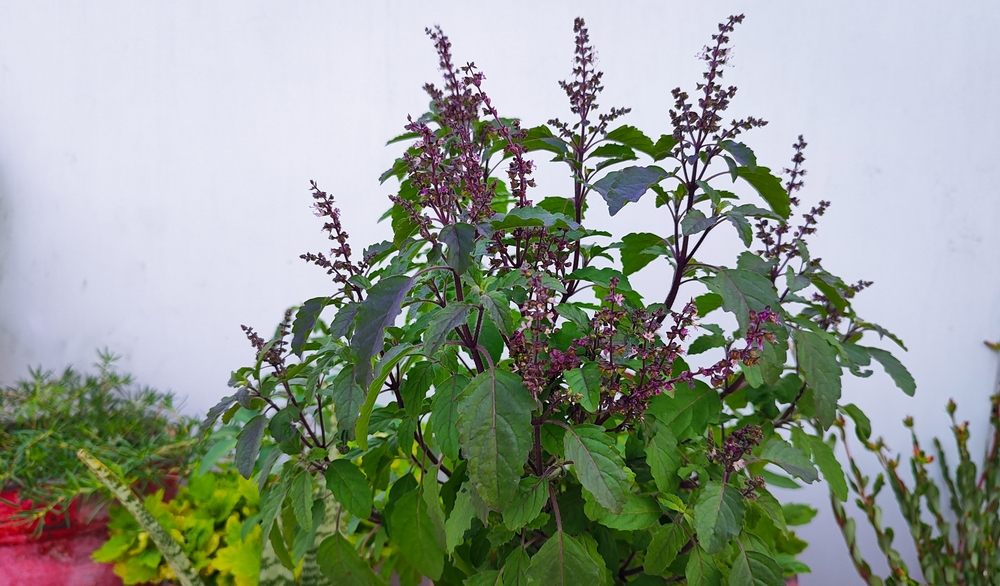
Medicinal leaves of tulsi help the body manage physical, chemical and emotional stress. They boost immunity by enhancing the activity of immune cells and protecting against bacterial, viral, and fungal infections. Tulsi aids in respiratory health by alleviating coughs, colds, asthma, and bronchitis. It also reduces inflammation, lowers blood sugar and cholesterol levels, and improves cognitive function by reducing anxiety and enhancing memory. Tulsi leaves are also used as a natural insect repellent.
Preparation and Administration
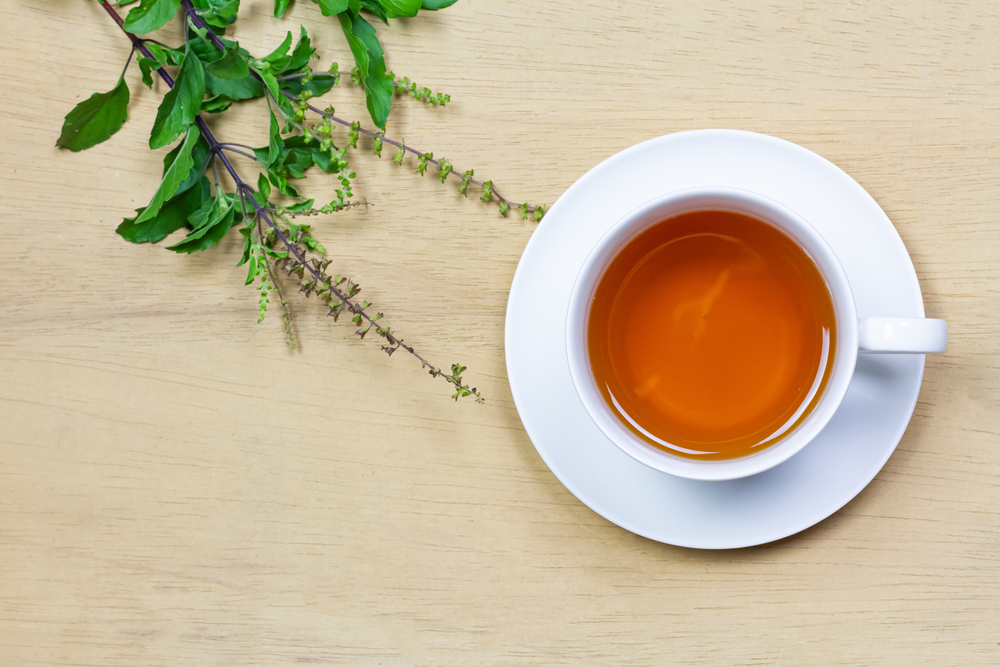
Tulsi medicinal leaves can be consumed orally or used topically. The most common method is brewing fresh or dried leaves into tea to relieve stress, support immunity, and improve respiratory health. Tulsi leaf extracts and powders are also available as supplements.
For topical use, crushed leaves or tulsi oil can be applied to the skin to treat minor wounds and infections. Chewing fresh tulsi leaves is a traditional practice for oral hygiene and detoxification. Tulsi’s versatility and safety make it a popular medicinal leaf in both traditional and modern wellness routines.
7. Peppermint (Mentha piperita)
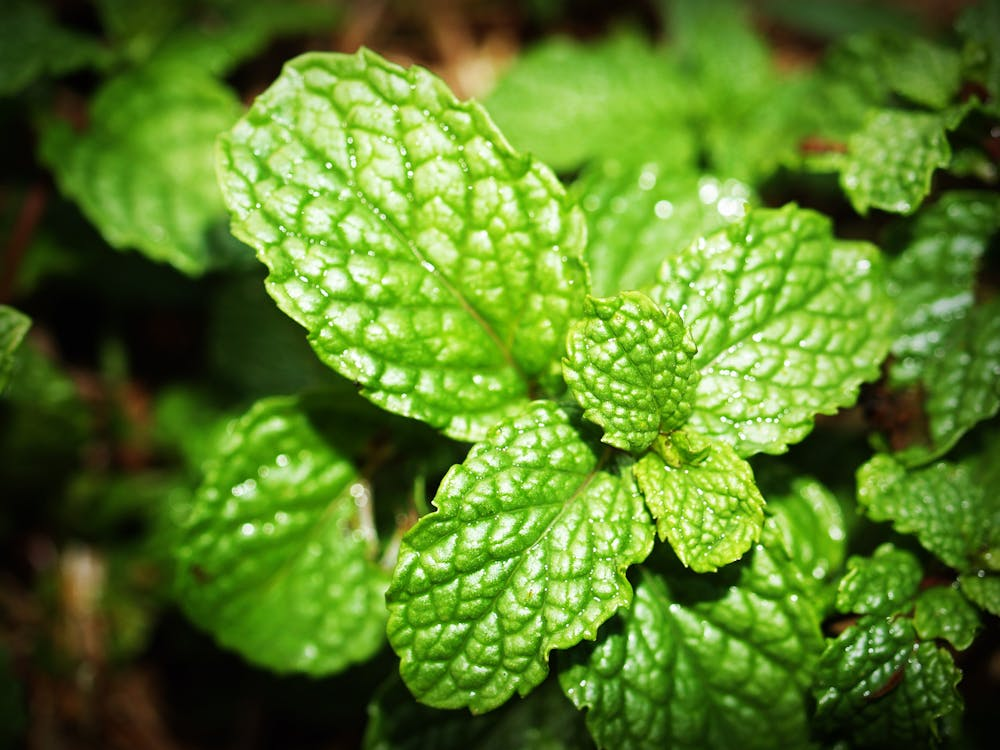
Peppermint (Mentha piperita) is a hybrid mint plant, a cross between watermint and spearmint, native to Europe and the Middle East but now cultivated globally. It features bright green, serrated leaves with a strong, refreshing aroma. People have used these medicinal leaves for centuries in traditional medicine to soothe digestive issues and relieve headaches, making peppermint a popular herb in both culinary and therapeutic uses.
Read More: Top Foods to Avoid After 60 for Better Health
Chemical Properties and Active Compounds
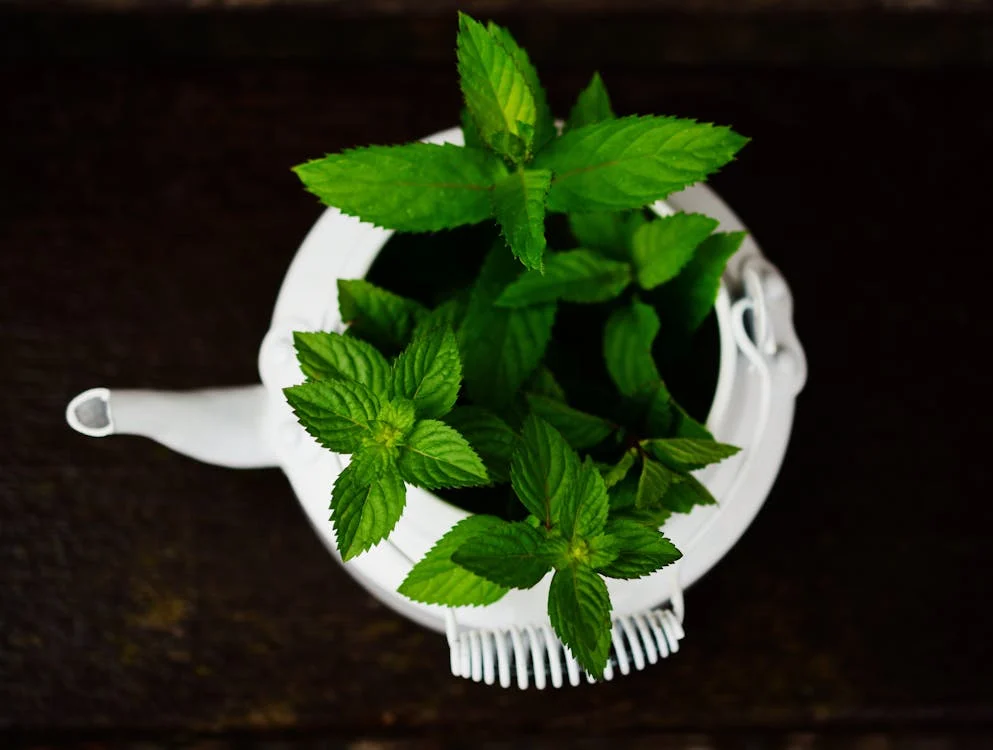
The medicinal leaves of peppermint contain essential oils rich in menthol (about 40.7%) and menthone (around 23.4%), along with menthofuran, menthyl acetate, and 1,8-cineole. These compounds give peppermint its characteristic cooling sensation and therapeutic effects. Menthol acts as an antispasmodic and analgesic meaning it relaxes muscles and eases pain. The leaves also contain antioxidants that help neutralize harmful free radicals, contributing to their anti-inflammatory and digestive benefits.
Medicinal Uses and Other Applications
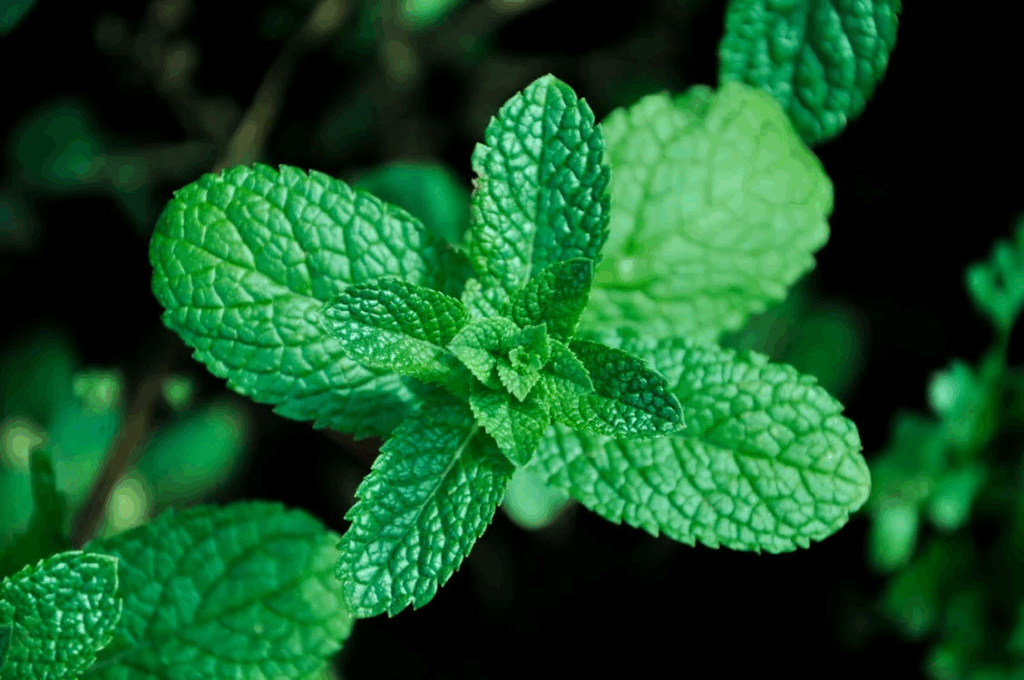
Peppermint leaves are widely used to relieve indigestion, bloating, and abdominal cramps by relaxing the muscles of the gastrointestinal tract. They also ease nausea and reduce headache symptoms through their calming and cooling effects. Peppermint’s antispasmodic properties help soothe irritable bowel syndrome (IBS) symptoms. Peppermint oil has antimicrobial and antioxidant effects, making it useful in oral care and as a natural preservative. Peppermint is also popular in aromatherapy for its refreshing scent that promotes mental clarity and reduces stress.
Preparation and Administration
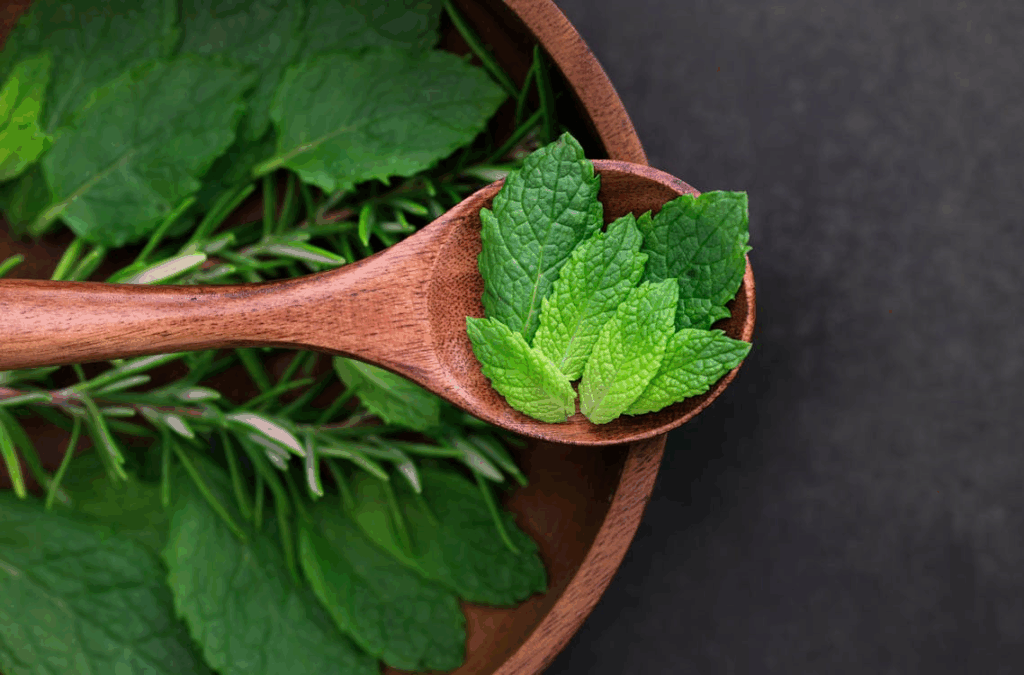
People commonly consume peppermint medicinal leaves as herbal teas made from fresh or dried leaves to soothe digestion and relieve headaches. They extract peppermint oil from the leaves and use it topically in diluted form to ease muscle pain and tension headaches. Inhalation of peppermint vapors can help relieve nasal congestion and nausea. Capsules containing peppermint oil are also available for digestive support.
8. Curry Leaves (Murraya koenigii)
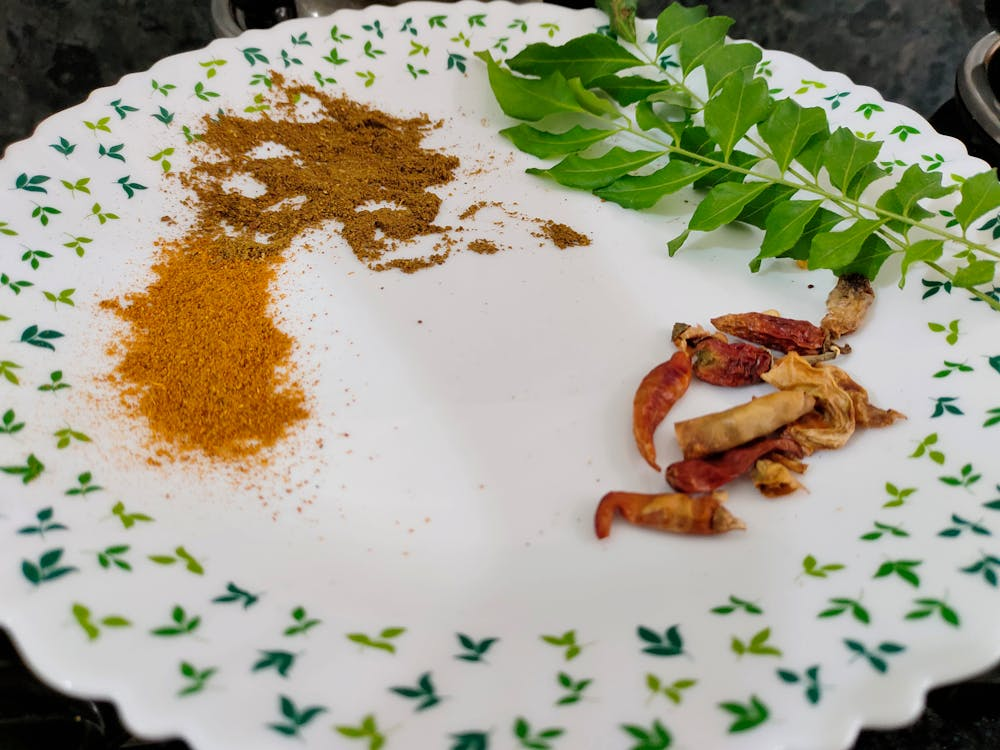
Curry leaves come from the Murraya koenigii tree, a small, aromatic evergreen native to India and Sri Lanka. People have used these medicinal leaves for centuries in Ayurvedic and traditional Indian medicine, coveting their unique flavor in culinary dishes and health benefits. They commonly use the glossy, dark green leaves in cooking to add aroma and taste, but they should not underestimate their medicinal value.
Chemical Properties and Active Compounds

Curry leaves contain a dense mixture of bioactive compounds including alkaloids, flavonoids, phenolic compounds, and essential oils. Key phytochemicals include mahanimbine, linalool, alpha-pinene, quercetin, and beta-carotene. These compounds provide potent antioxidant, anti-inflammatory, antimicrobial, and antidiabetic effects. The leaves are also rich in vitamins A, B, and C, and minerals like calcium, phosphorus, and iron, which contribute to their health-promoting properties.
Medicinal Uses and Other Applications
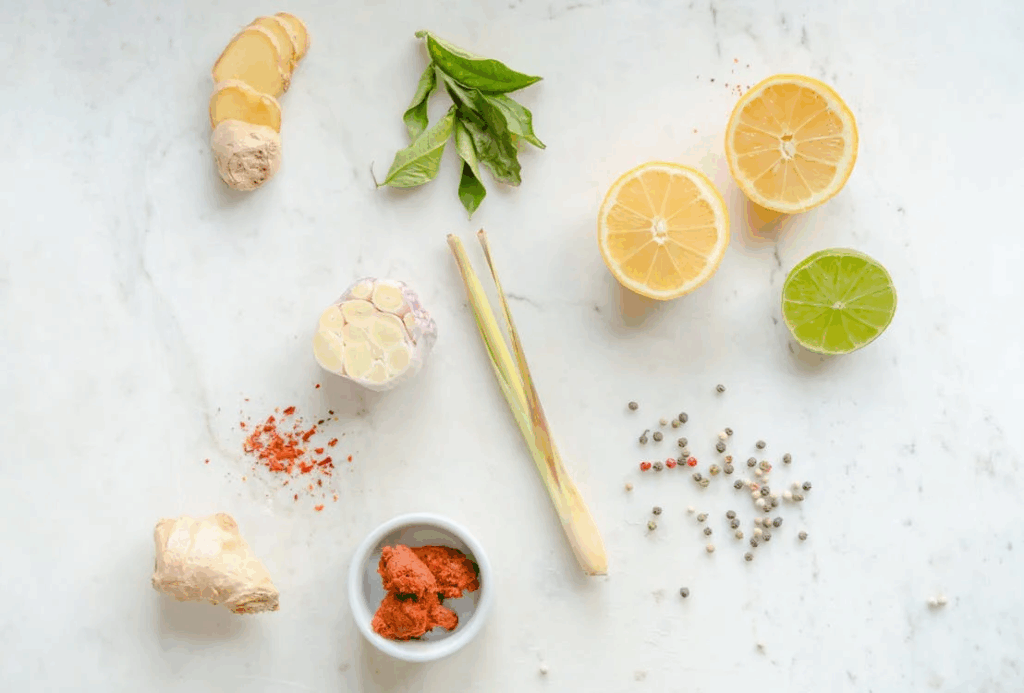
Curry leaves medicinal properties support digestion by reducing gas, indigestion, and nausea. They help manage blood sugar levels, making them useful in diabetes care, and possess antioxidant properties that protect the body from stress and chronic diseases. Curry leaves improve hair health by strengthening roots, preventing hair fall, and delaying premature greying. They also have anti-inflammatory and antimicrobial properties, aiding in skin health and wound healing. Additionally, curry leaf extracts show promise in protecting kidney function and fighting certain cancers due to their bioactive compounds. However further study is needed.
Preparation and Administration

People often use curry leaves in cooking, adding them to dishes to enhance the flavor. They can use them either fresh or dried. For therapeutic purposes, people can boil the leaves in water to make herbal teas or grind them into powders for oral consumption to help regulate blood sugar and aid digestion. People apply curry leaf oil, extracted from the leaves, topically to improve hair health and treat skin conditions.
Read More: 9 Foods Packed with Tryptophan and Why They’re Essential for You
9. Guava Leaves (Psidium guajava)
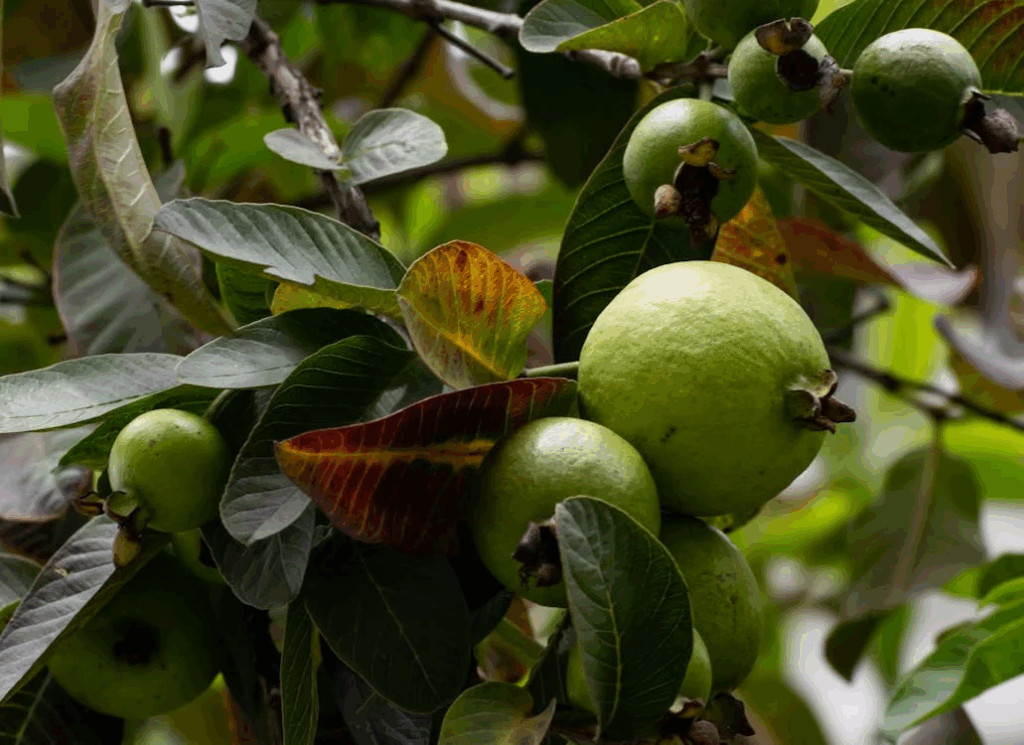
Guava (Psidium guajava) is a tropical fruit tree native to Central America but now widely cultivated across Asia, Africa, and tropical regions globally. The tree produces oval-shaped, dark green medicinal leaves with a slightly rough texture and a strong aroma. Indigenous Australians have used guava leaves for centuries in traditional medicine to treat digestive, respiratory, and skin ailments. People across India, Mexico, and other cultures have also relied on these leaves to address similar health issues, leveraging their medicinal properties for generations. Their accessibility and versatility make them a valuable natural remedy in many rural and urban communities.
Chemical Properties and Active Compounds
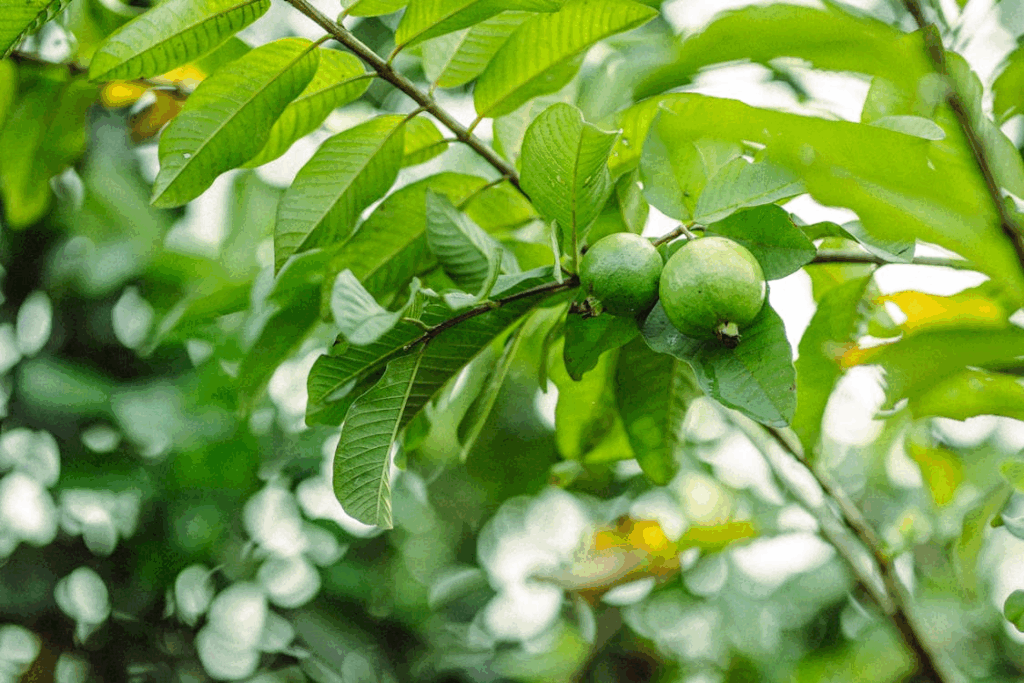
Guava leaves contain a rich variety of bioactive compounds, including flavonoids and essential oils such as eucalyptol and β-caryophyllene. These compounds provide potent antioxidant, anti-inflammatory, antimicrobial, and muscle relaxing effects. Its flavonoids give guava leaves their antibacterial and antiviral properties. Tannins guava leaves help reduce intestinal inflammation and control diarrhea by tightening the intestinal lining. The leaves also contain vitamins A and C, which support immune function and tissue repair.
Medicinal Uses and Other Applications
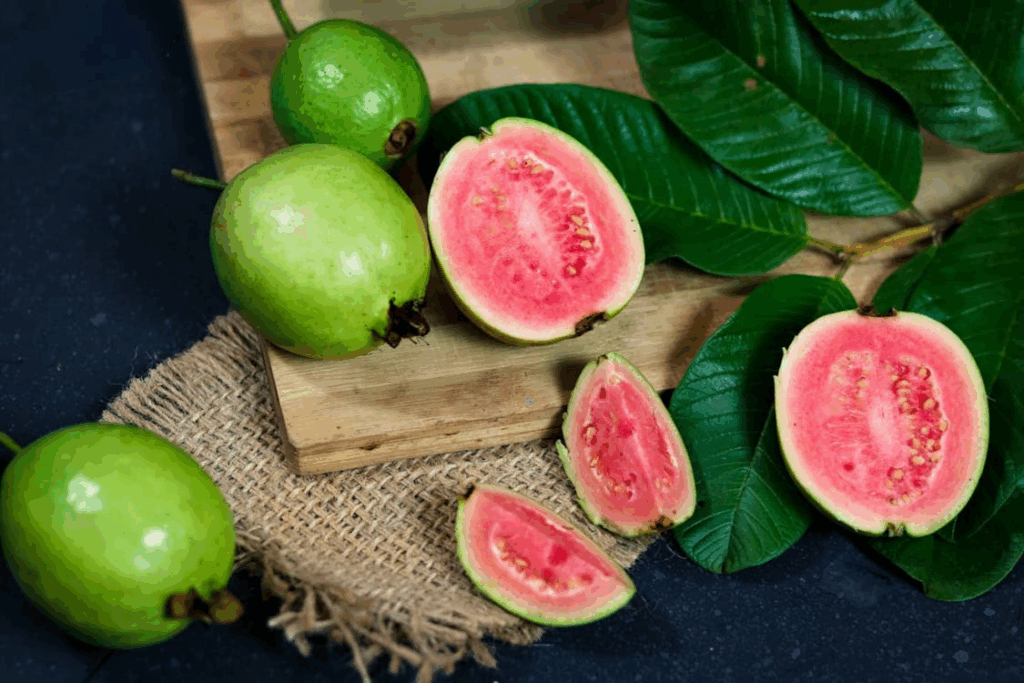
Guava leaves are often used to help stop diarrhea by fighting bad germs in the gut. It also slows down bowel movements, which helps relieve symptoms faster. They support oral health by fighting bacteria that cause cavities and gum disease. Guava leaves help lower blood sugar levels by slowing down sugar absorption and improving insulin sensitivity. This makes guava leaves beneficial for people with diabetes. Additionally, their anti-inflammatory and antimicrobial properties aid in wound healing, respiratory infections, and skin conditions. Guava leaf extracts also show promise in reducing allergic reactions and protecting against oxidative stress.
Preparation and Administration
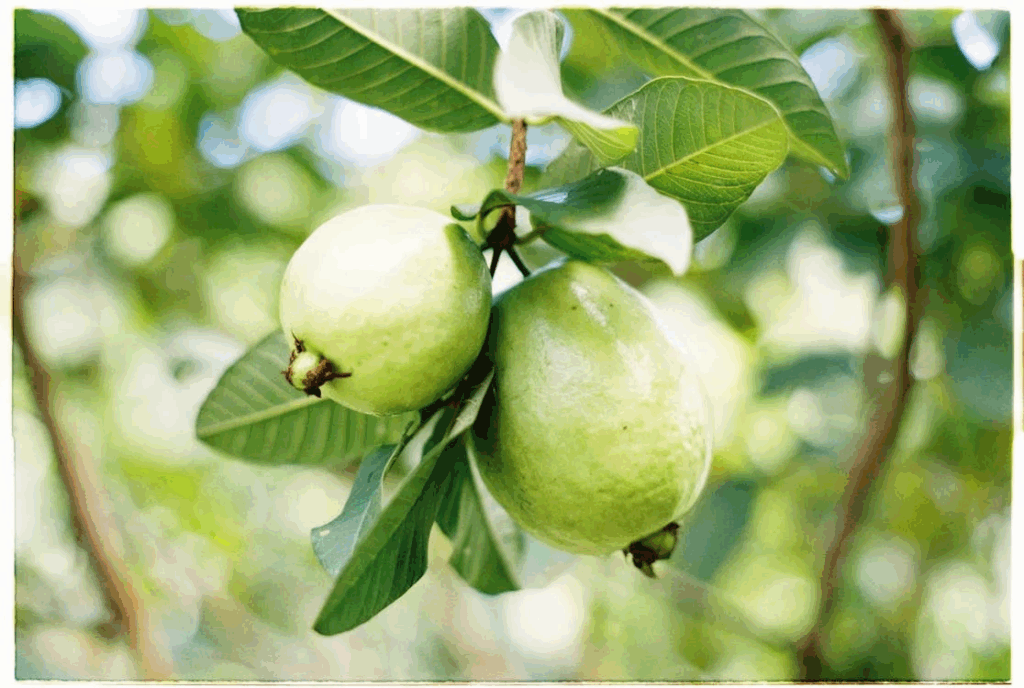
Guava leaves are most commonly used as teas made by boiling fresh or dried leaves in water. Drinking guava leaf tea helps soothe diarrhea, improve digestion, and regulate blood sugar. Topical applications include poultices or ointments made from crushed leaves to promote wound healing and reduce inflammation. Chewing fresh leaves on an empty stomach is a traditional method to relieve stomach discomfort. Guava leaf extracts and supplements are also available for targeted health benefits.
10. Moringa (Moringa oleifera)

Moringa oleifera, often called the drumstick tree or miracle tree, is native to northern India but now grows widely in tropical and subtropical regions across Asia, Africa, and Latin America. This fast-growing, drought-resistant tree produces slender, dark green medicinal leaves that people have used for centuries in traditional medicine systems such as Ayurveda and folk remedies. The leaves are highly nutritious and valued for their wide range of health benefits, making moringa a vital plant in many cultures for both food and medicine.
Chemical Properties and Active Compounds
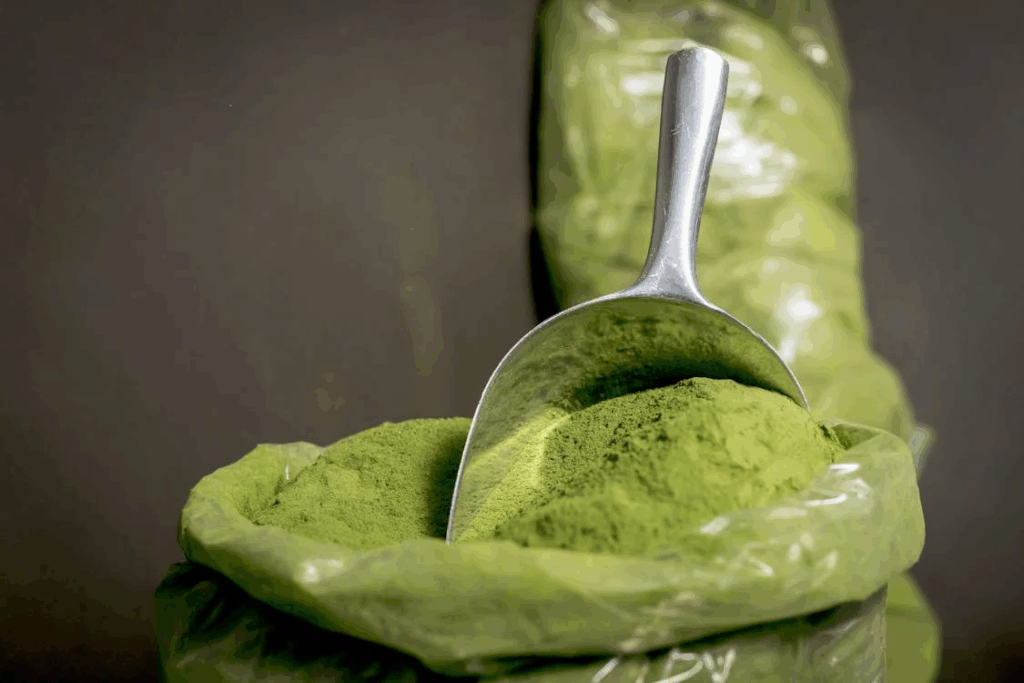
Moringa medicinal leaves are rich in bioactive compounds, including high levels of vitamins A, C, and E, essential minerals such as calcium, potassium, iron, manganese, zinc, and copper, as well as essential amino acids. They contain powerful antioxidants such as flavonoids (quercetin, kaempferol), phenolic acids (chlorogenic acid), and carotenoids. These compounds neutralize free radicals, reduce inflammation, and protect cells from damage. Moringa leaves also have anti-inflammatory agents like β-sitosterol and moringin, and plant proteins that support metabolic health.
Medicinal Uses and Other Applications
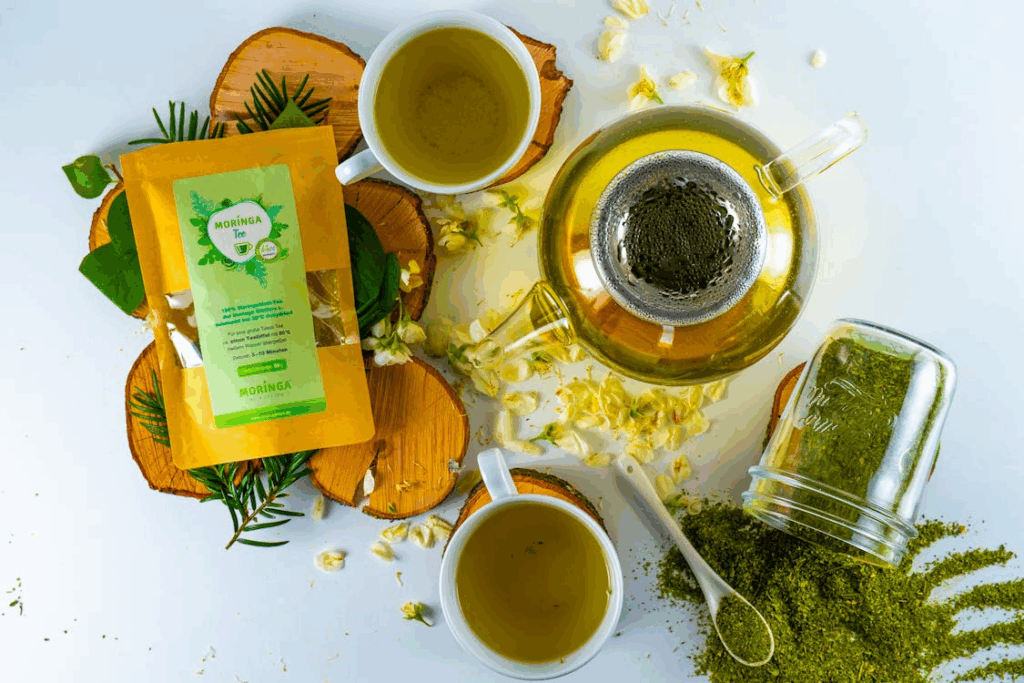
Medicinal leaves of moringa support energy levels by providing essential nutrients and antioxidants that help reduce fatigue. They help lower cholesterol and blood sugar, contributing to heart and metabolic health. Moringa’s anti-inflammatory properties may alleviate symptoms of arthritis and other chronic diseases.
The leaves protect the liver from damage and oxidative stress, promoting detoxification and healthy liver function. They also support brain health by reducing inflammation and oxidative damage, potentially improving memory and cognitive function. Beyond these, moringa leaves aid in wound healing, immune support, and may have anti-cancer effects, though further study is needed. Their nutritional richness makes them valuable in combating malnutrition worldwide.
Preparation and Administration
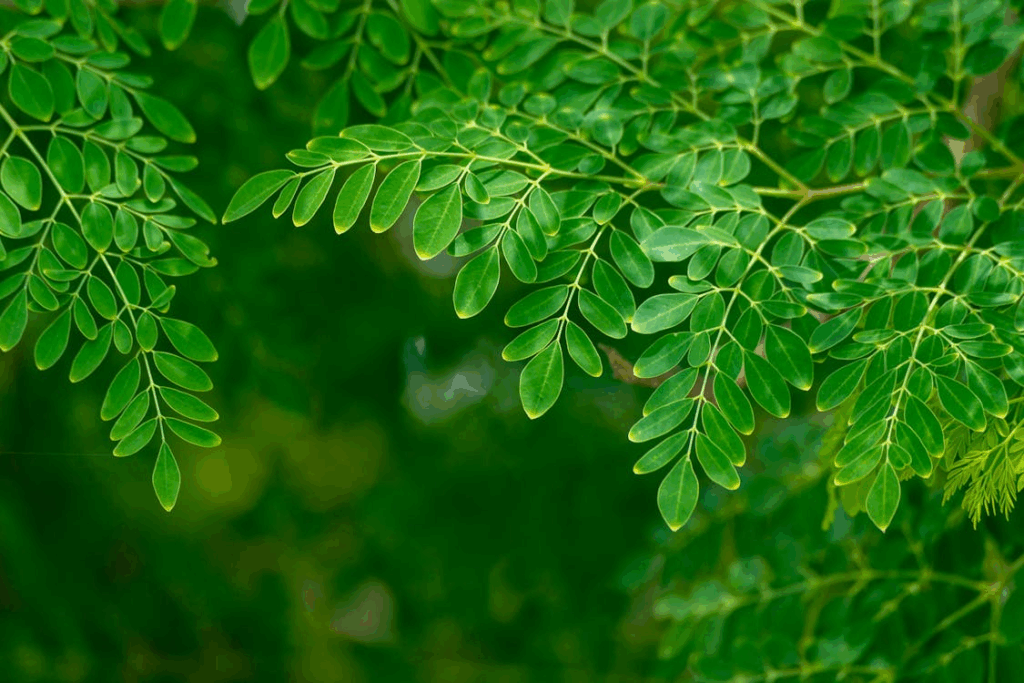
People can consume moringa leaves fresh, dried, or powdered. They often cook fresh leaves like spinach, while they add dried leaf powder to smoothies, teas, or capsules for supplementation. Moringa tea made by steeping dried leaves offers antioxidant and anti-inflammatory benefits. People extract moringa oil from seeds and apply it topically to support skin health. They mostly use the leaves internally rather than topically. Moringa oil offers numerous skin benefits: it moisturizes, soothes inflammation, promotes wound healing, and provides antioxidant protection.
Medicinal leaves offer powerful, natural healing backed by centuries of tradition and modern science. They provide effective, accessible remedies for common ailments, supporting immunity, reducing inflammation, and providing an array of health benefits. Embracing these natural alternatives could be beneficial when paired with conventional medicines.
Disclaimer: This information is not intended to be a substitute for professional medical advice, diagnosis or treatment and is for information only. Always seek the advice of your physician or another qualified health provider with any questions about your medical condition and/or current medication. Do not disregard professional medical advice or delay seeking advice or treatment because of something you have read here.
Read More: Top 10 Spices & Herbs to Support Arterial Health

